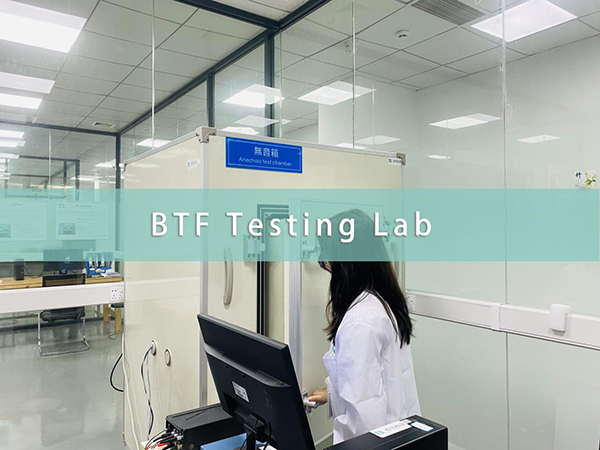
Hearing Aid Compatibility (HAC) refers to the compatibility between a mobile phone and a hearing aid when used simultaneously. For many people with hearing impairments, hearing aids are essential equipment in their daily lives. However, when they use their phones, they are often subjected to electromagnetic interference, resulting in unclear hearing or noise. To address this issue, the American National Standards Institute (ANSI) has developed relevant testing standards and compliance requirements for HAC compatibility of hearing aids.
In the United States, over 37.5 million people suffer from hearing impairment. Among them, about 25% of people aged 65 to 74 suffer from hearing impairment, and about 50% of elderly people aged 75 and above suffer from disabling hearing impairment. In order to ensure that these populations have access to communication services on an equal basis and are able to use mobile phones on the market, the Federal Communications Commission of the United States has released a draft for consultation, planning to achieve 100% hearing aid compatibility (HAC) on mobile phones.
HAC is an industry term that first appeared in the late 1970s. One of the working modes of hearing aids relies on this, which is that the alternating magnetic field of the phone's sound components will cause the hearing aids to produce induced voltage. This gave rise to the testing method for HAC. The HAC test describes the fundamental electromagnetic response curve generated by the components on the mobile phone. If the curve does not fit within the box, it indicates that the phone is not suitable for people with hearing impairments.
By the mid-1990s, it was discovered that the radio frequency signal on mobile phones was strong, which would block the induced signal fed by the sound device to the hearing aid. Therefore, a group of three parties (wireless phone manufacturers, hearing aid manufacturers, and people with weaker hearing) sat together and jointly drafted and formulated IEEE C63.19, which detailed the impact testing of radio frequency units, electromagnetic testing of wireless devices (in this case, mobile phones), etc., including signals, hardware recommendations, testing steps, wiring, testing principles, etc.
1. FCC requirements for all handheld terminal devices in the United States:
The Federal Communications Commission (FCC) in the United States requires that starting from December 5, 2023, all handheld terminal devices must meet the requirements of the ANSI C63.19-2019 standard (i.e. the HAC 2019 standard).
Compared to the old version of ANSI C63.19-2011 (HAC 2011), the main difference between the two lies in the addition of volume control testing requirements in the HAC 2019 standard. The volume control testing items mainly include distortion, frequency response, and session gain. Relevant requirements and testing methods need to refer to the standard ANSI/TIA-5050-2018
2.What are the items included in the HAC test for hearing aid compatibility?
HAC testing for hearing aid compatibility typically includes RF Rating testing and T-Coil testing. These tests aim to evaluate the degree of interference of mobile phones on hearing aids to ensure that hearing aid users can obtain a clear and undisturbed auditory experience when answering calls or using other audio functions.

FCC certification
According to the latest requirements of ANSI C63.19-2019, requirements for Volume Control have been added. This means that manufacturers need to ensure that the phone provides appropriate volume control within the hearing range of hearing aid users to ensure they can hear clear call sounds. National requirements for HAC testing standards:
United States (FCC): FCC eCR Part 20.19 HAC
Canada (ISED): RSS-HAC
China: YD/T 1643-2015
3.On April 17, 2024, TCB seminar updated HAC requirements:
1)The device needs to maintain the highest transmission power in ear to ear mode.
2)U-NII-5 requires testing one or more frequency bands at 5.925GHz-6GHz.
3)The temporary guidance on the 5GNR FR1 frequency band in KDB 285076 D03 will be removed within 90 days; After removal, it is necessary to cooperate with the base station (which needs to support VONR function) for testing to prove the HAC compliance of 5GNR, including volume control requirements.
4)All HAC phones need to declare and execute Waiver PAG in accordance with the exemption document Waiver DA 23-914.
BTF Testing Lab, our company has electromagnetic compatibility laboratories, safety regulations Laboratory, wireless radio frequency Laboratory, battery Laboratory, chemical Laboratory, SAR Laboratory, HAC Laboratory, etc. We have obtained qualifications and authorizations such as CMA, CNAS, CPSC, VCCI, etc. Our company has an experienced and professional technical engineering team, which can help enterprises solve the problem. If you have relevant testing and certification needs, you can directly contact our Testing staff to obtain detailed cost quotations and cycle information!

HAC certification
Post time: Jun-25-2024










